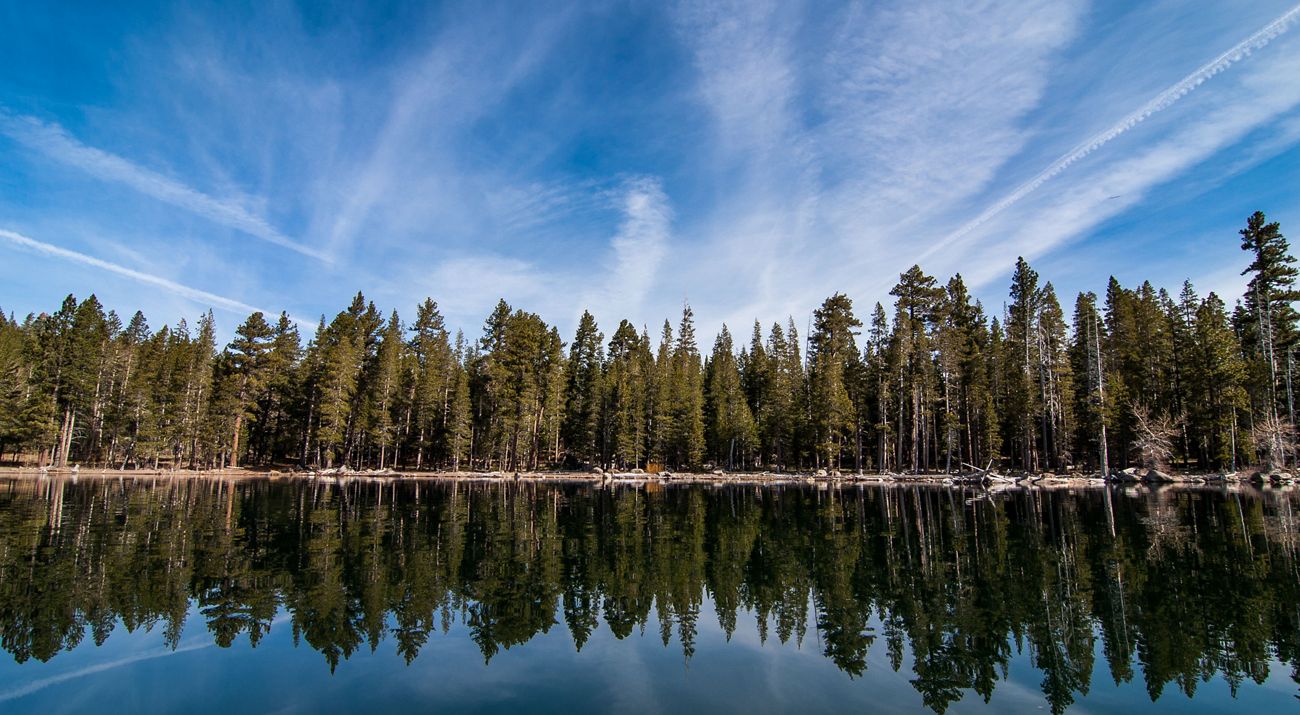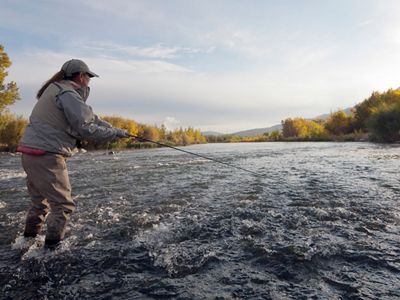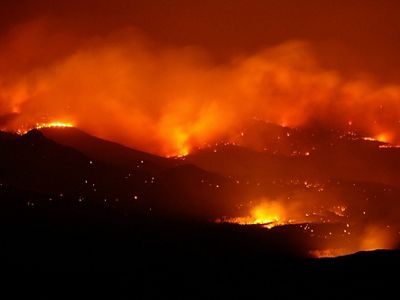Truckee River Watershed
Fixing forests and protecting the future of the river that is key to the quality of life in Reno, Sparks, Truckee, and other communities.

Nature is undeniably important for the health of Nevada’s cities. For Reno and Sparks, the Truckee River and forest surrounding its headwaters are crucial to life in the Truckee Meadows. The Truckee River watershed supports the area’s $20-billion economy, provides clean drinking water to 400,000 people and 7,000 businesses, cleans our air, and gives locals and visitors alike a place to get outside and connect with nature.

Stewards of the Truckee River
From protecting and restoring the forested lands around Independence Lake to revitalizing 11 miles of the Lower Truckee River downstream of Reno and Sparks, at McCarran Ranch Preserve and other sites, The Nature Conservancy has been taking care of the Truckee River for decades. We’re invested in the river’s future for nature and for people, which is why we're expanding our efforts to protect the river from its source: the headwaters and its forest.
Planning for Our Future: Headwaters Forest Study
A century of fire suppression has left forests across the West—including our own in the Sierra—vulnerable to unusually large fires. The Truckee River headwaters forest is overly dense with trees, and they’re stressed and dying from years of drought. These conditions increase the risk of unnatural, high-intensity fires that burn hotter and faster, destroy tree canopy and wildlife habitat, and send ash and sediment into waterways. TNC—in collaboration with the Truckee Meadows Water Authority and U.S. Forest Service—is applying best-available science to assess the risk of high-intensity wildfires in the Truckee River watershed. Our study will look at how a fire might affect our communities and identify strategies to reduce the chances of such fires and their negative impacts.
Unnaturally Large Fires Are Costly for Nature and People
Restoring forest health before a fire may help avoid or minimize damage, saving time, nature, and money. For the Las Conchas Fire in New Mexico, for example, the impact costs were about $1,900 per acre, which is more than double what the costs of treatment before the fire would have been, about $700 per acre.
Fires pose a direct risk to homes, businesses, and schools, as well as these other community interests:
- CLEAN WATER: Sediment and debris from fires can increase the costs of municipal water treatment by degrading source water quality and, in extreme cases, can render water supply infrastructure unusable. Sediment and debris from fires increase the risk of flooding, and sediment can fill in reservoirs, reduce storage capacity, and require expensive dredging to correct.
- CLEAN AIR: Any Nevadan who has experienced a recent fire season knows that when smoke fills our valley, the air can become nearly unbreathable. Lowered air quality threatens public health, especially for the very young, the elderly, and an estimated more than 55,000 people in our community with asthma or chronic lung disease.
- FISH AND WILDLIFE: Fires destroy habitat for wildlife including black bears, mountain lions, and mule deer. Silt and ash runoff in streams can also reduce water quality and choke out fish like Lahontan cutthroat trout. Restoring unsightly or unusable scorched lands takes decades and can be more expensive than protecting them in the first place.
- ECONOMY AND QUALITY OF LIFE: Our area’s top-notch outdoor recreation opportunities—including kayaking, boating, hiking, camping, wildlife watching, fishing, and skiing—can all be affected by fire and prolonged closures of burned areas. These activities and spending on gear, travel, tourist activities, fuel, and more play a large role in our economy. Statewide each year, outdoor recreation supports $13 billion in spending and 87,000 jobs.

Leading with Examples from Around the Globe
TNC has helped develop 24 watershed investment programs globally. Our flagship project, the Rio Grande Water Fund, was developed in response to the 2011 Las Conchas Fire to generate funding to restore 600,000 acres of forest near Albuquerque. In just two years, the program has tripled the amount of acres restored annually and is boosting the local economy by creating jobs and generating wood for timber companies. Here in Nevada, we hope to create our local before a devastating fire happens, using our study and science to guide our actions to have the biggest impact.
You Can Be Part of What's Next
Fortunately, it's not too late to reduce the risk of unnaturally large wildfires in the Truckee River watershed. An investment in restoring forest health today could be our community’s best insurance policy against post-fire impacts and costs tomorrow—and much cheaper in the long run. For Reno and Sparks to be healthy, they need the Truckee River. And for the Truckee River to be healthy, it needs you! Protecting the Truckee River, our well-being, and our quality of life will ultimately take each one of us—the whole community—working together.